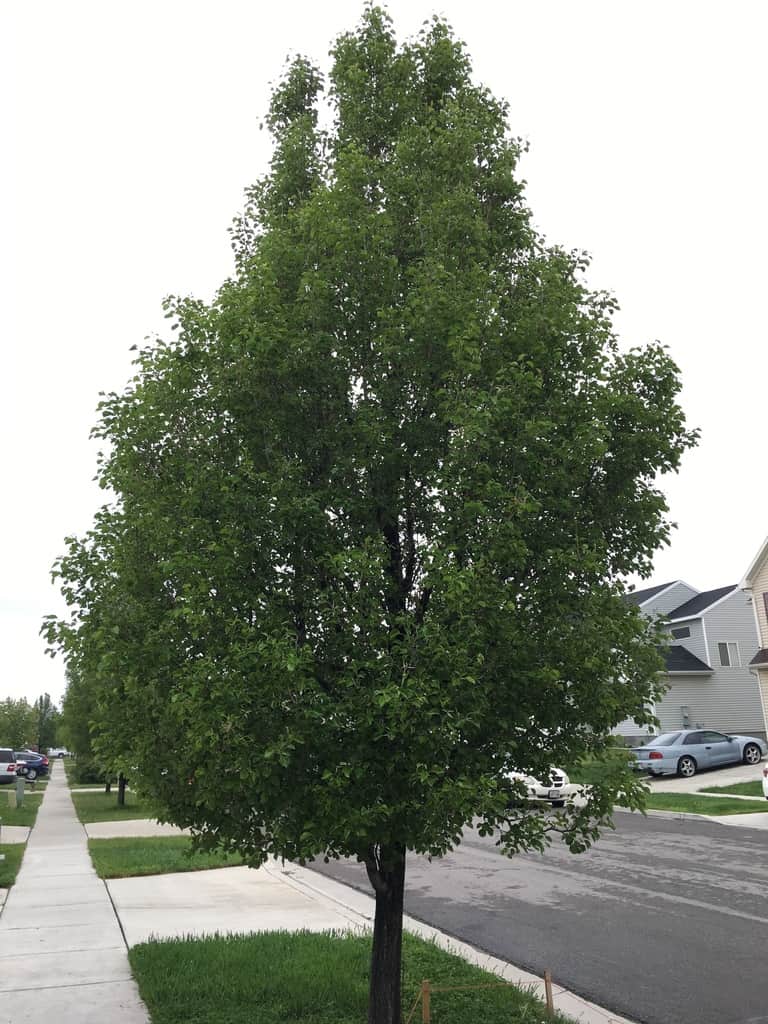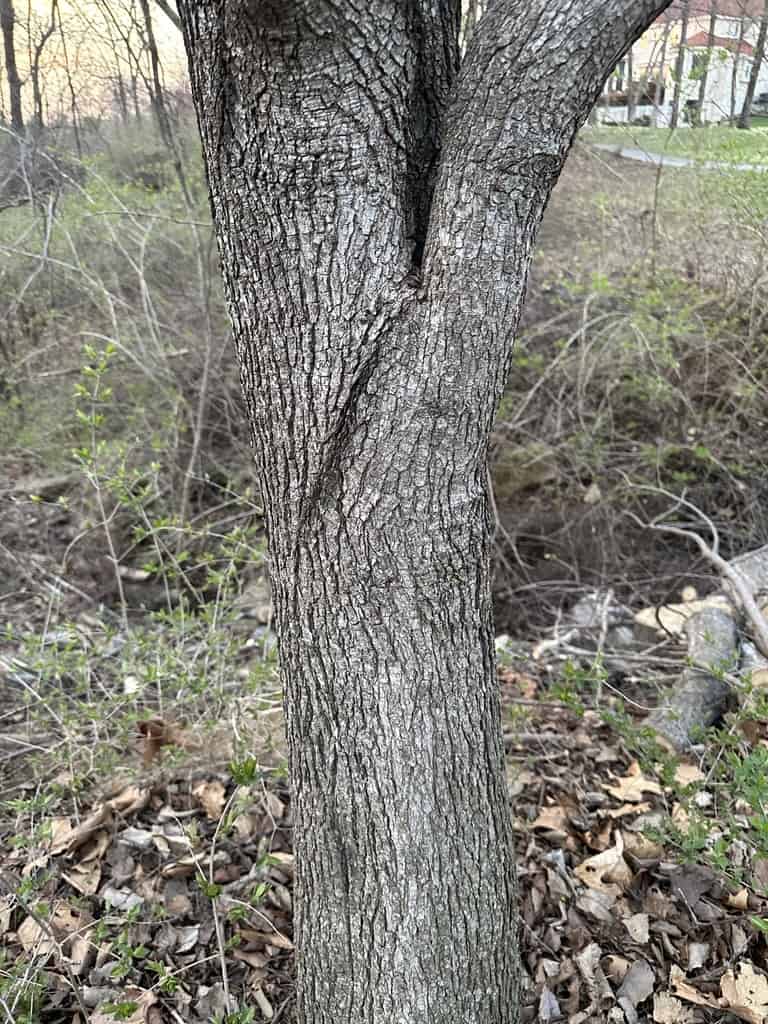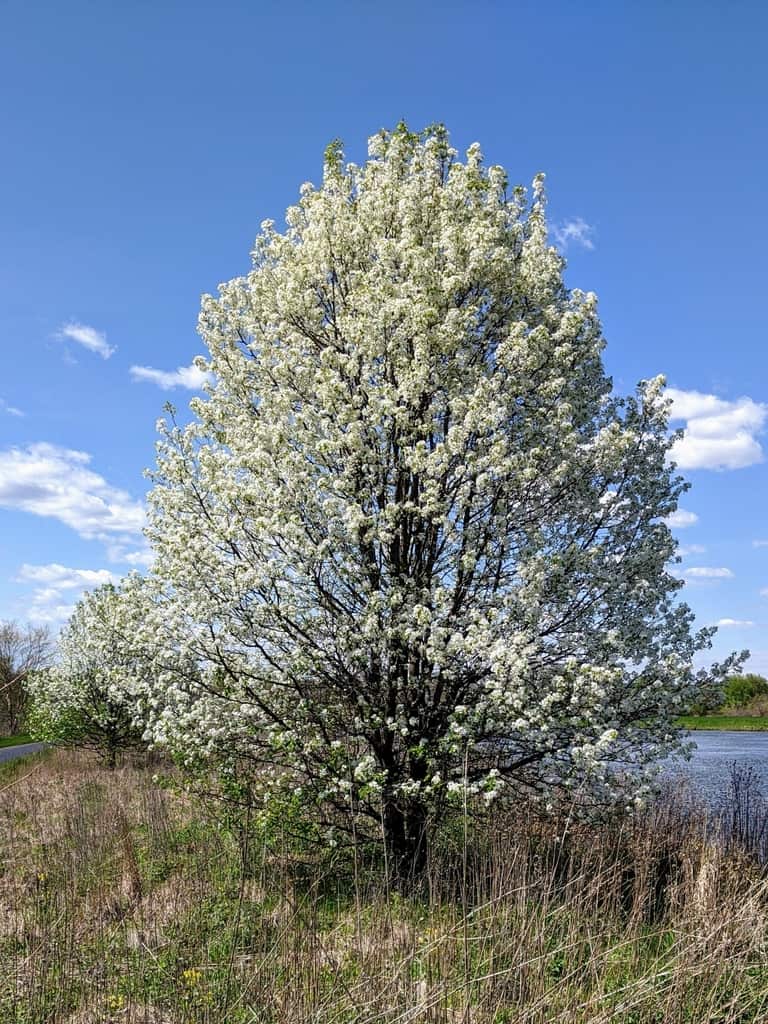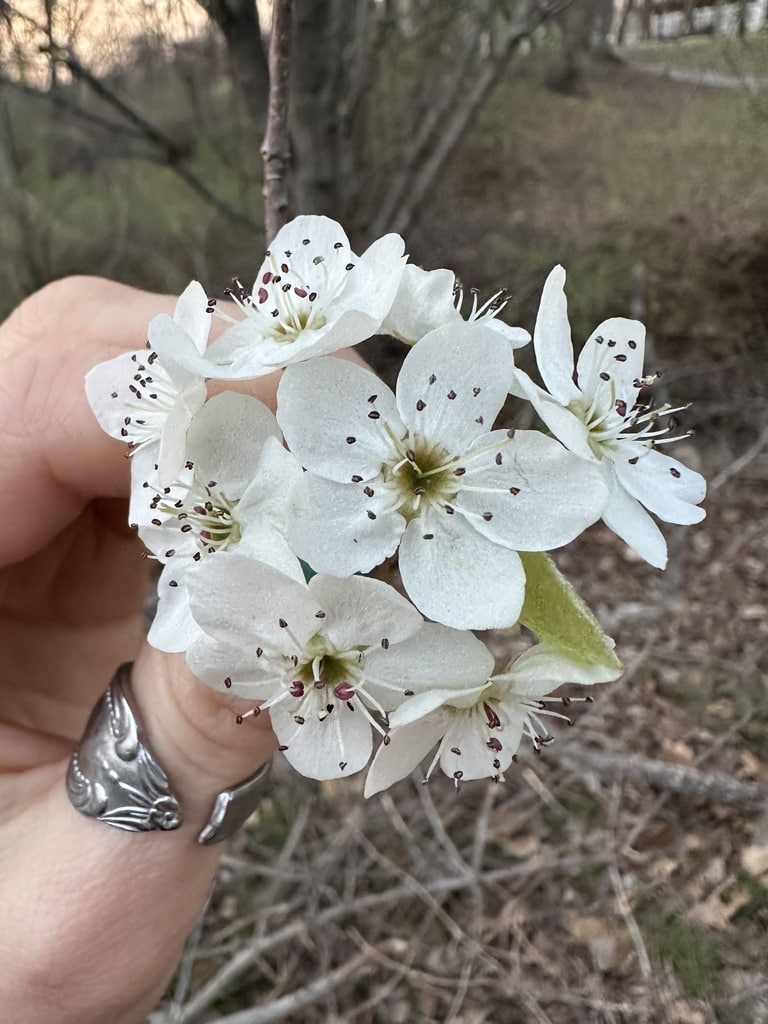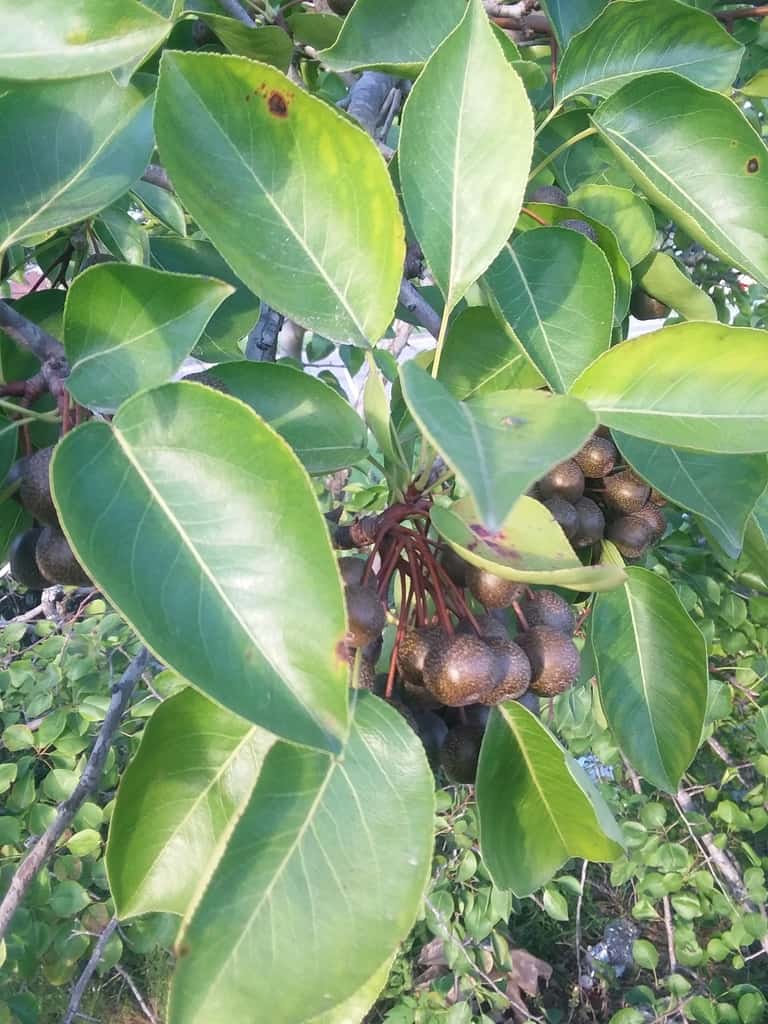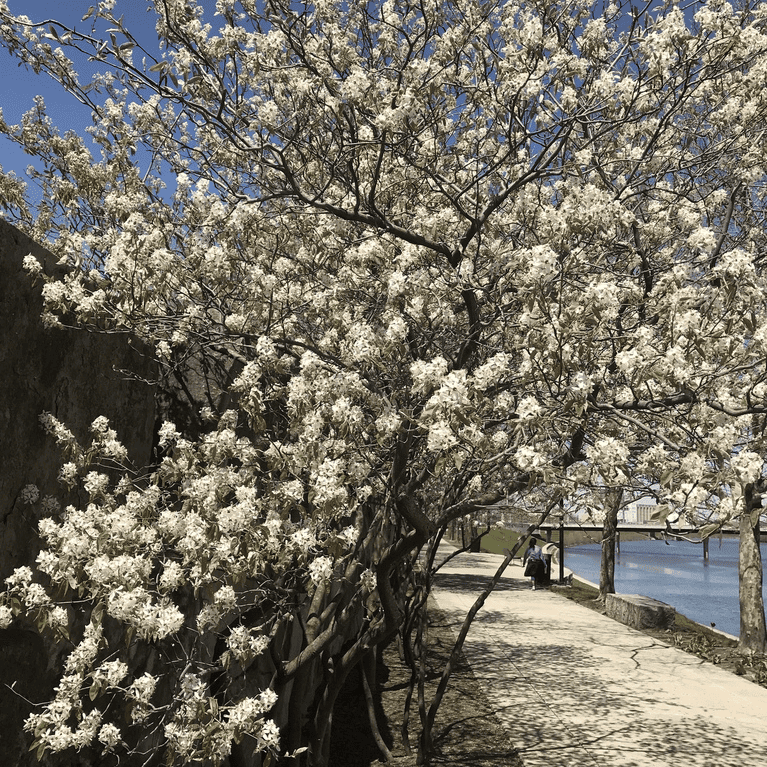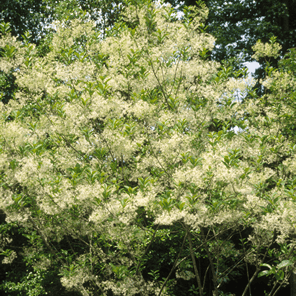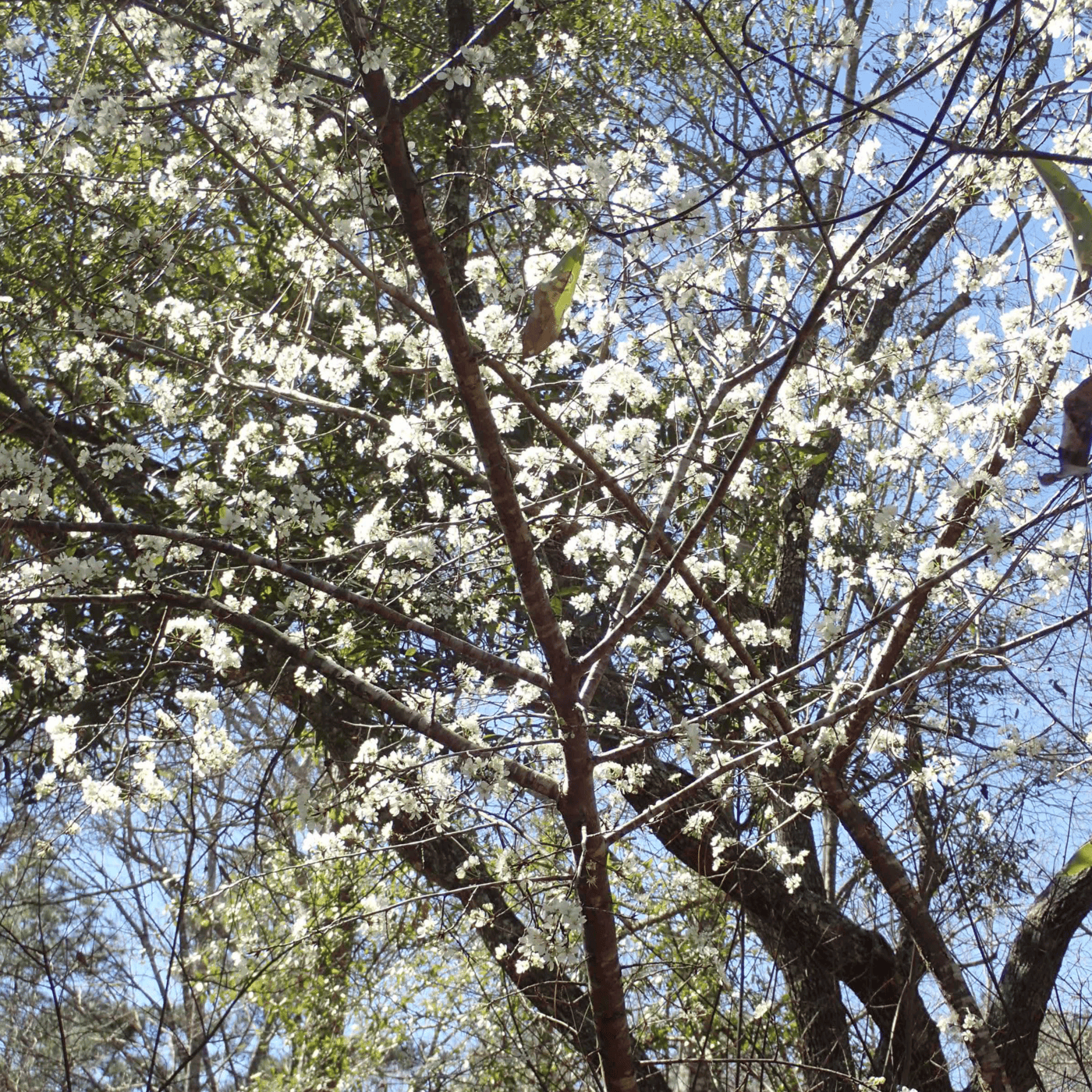Callery Pear Pyrus calleryana, which is often referred to as Bradford Pear, is a medium size (60′ X 25′) tree first introduced into the U.S. (Maryland) from Asia by the U.S. Department of Agriculture in 1908 for breeding resistance to fire blight disease into fruiting pears. About 20 cultivars were developed in the 1950s as ornamentals and widely sold and planted; these cultivars produce viable seeds, which are dispersed by birds and other animals to natural areas. Sterile cultivars can cross-pollinate with other pear species to produce fertile hybrids.
Callery Pear has become highly invasive, especially in the U.S. Northeast. It is classified by the Louisiana Department of Wildlife and Fisheries as a Tier II invasive species defined as “currently causing moderately negative impacts on wildlife or natural communities in Louisiana”. Its wood is weak and vulnerable to wind and ice damage. Callery Pear flowers smell like rotting fish. The species also is susceptible to fireblight, and provides little to no wildlife value.
Landscape With These Native Plants Instead:

